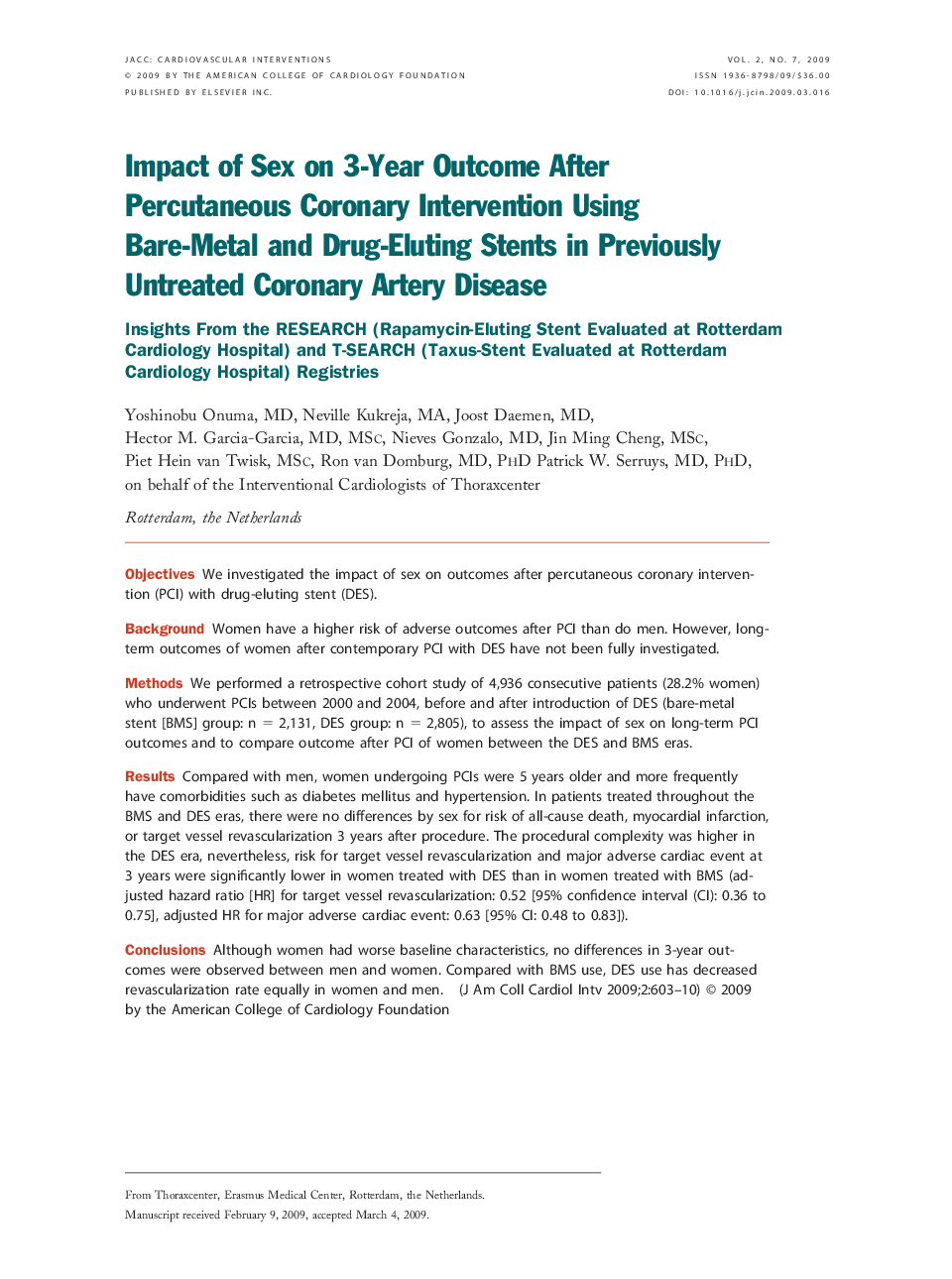| کد مقاله | کد نشریه | سال انتشار | مقاله انگلیسی | نسخه تمام متن |
|---|---|---|---|---|
| 2941440 | 1177071 | 2009 | 8 صفحه PDF | دانلود رایگان |

ObjectivesWe investigated the impact of sex on outcomes after percutaneous coronary intervention (PCI) with drug-eluting stent (DES).BackgroundWomen have a higher risk of adverse outcomes after PCI than do men. However, long-term outcomes of women after contemporary PCI with DES have not been fully investigated.MethodsWe performed a retrospective cohort study of 4,936 consecutive patients (28.2% women) who underwent PCIs between 2000 and 2004, before and after introduction of DES (bare-metal stent [BMS] group: n = 2,131, DES group: n = 2,805), to assess the impact of sex on long-term PCI outcomes and to compare outcome after PCI of women between the DES and BMS eras.ResultsCompared with men, women undergoing PCIs were 5 years older and more frequently have comorbidities such as diabetes mellitus and hypertension. In patients treated throughout the BMS and DES eras, there were no differences by sex for risk of all-cause death, myocardial infarction, or target vessel revascularization 3 years after procedure. The procedural complexity was higher in the DES era, nevertheless, risk for target vessel revascularization and major adverse cardiac event at 3 years were significantly lower in women treated with DES than in women treated with BMS (adjusted hazard ratio [HR] for target vessel revascularization: 0.52 [95% confidence interval (CI): 0.36 to 0.75], adjusted HR for major adverse cardiac event: 0.63 [95% CI: 0.48 to 0.83]).ConclusionsAlthough women had worse baseline characteristics, no differences in 3-year outcomes were observed between men and women. Compared with BMS use, DES use has decreased revascularization rate equally in women and men.
Journal: JACC: Cardiovascular Interventions - Volume 2, Issue 7, July 2009, Pages 603–610